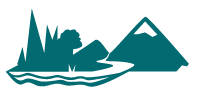Barn Owl

Species description
The Barn Owl (Tyto alba) is a distinct looking owl that is easily identified by its white heartshaped face, black eyes, golden-coloured wings and long legs. It is considered a midsized owl, growing to a height of 35-45 centimetres. Barn Owl can be distinguished from other species of owls in Ontario because they lack the “ear tufts” commonly found on other owls and their call consists of hisses, screams, cries and other strange noises instead of the typical hoot or whistle.
In Canada, two distinct populations of Barn Owl are recognized: an Eastern population (Ontario) and a Western population (British Columbia). In Ontario, the Eastern population of Barn Owl is at the northernmost limit of its North American range. Most sightings and nesting records of Barn Owl in the province have been within 50 kilometres of the north shore of Lake Erie and the adjacent Lake Ontario shoreline. Barn Owl often nests and roosts in barns and abandoned buildings, though may also use natural cavities in trees or holes in cliff faces. A map of the provincial distribution of Barn Owl is available on the Government of Ontario’s species at risk website.
Habitat loss is considered the major reason for Barn Owl’s decline in Canada. However, harsh winters, predation, road mortality and the use of rodenticides may have also affected populations. The Eastern population is particularly at risk due to historic and ongoing losses of foraging habitat, resulting from agricultural intensification and urban sprawl along the north shore of Lake Erie. This population is also limited by poor adaptability to cold winter temperatures and high amounts of snowfall.
Barn Owl is listed as endangered at both the provincial (Species at Risk in Ontario List) and federal (Schedule 1 under the Species at Risk Act) levels with regard to the Eastern population. Globally, the species is considered to be secure.
Provincial status
Prior to the Endangered Species Act, 2007 (ESA or “the Act”) the Committee on the Status of Species at Risk in Ontario (COSSARO) assessed Barn Owl as endangered. It was listed on the Species at Risk in Ontario List as endangered in 2004, but was not regulated under the previous Endangered Species Act. The species retained its endangered status when the ESA came into force in 2008. In its future assessments, COSSARO may consider information regarding the species’ threats and trends in population and distribution gained through protection and recovery actions.
Species and habitat protection
As endangered species, Barn Owl have been protected from being killed, harmed, harassed, captured or taken since the ESA came into force in 2008.
In addition, the habitat of the Barn Owl has been protected from being damaged or destroyed since 2010, when the government developed a habitat regulation for the species.
Protecting Barn Owl and enforcing the regulation protecting the specific habitat of the species are key components in the implementation of the ESA, and continue to be government-led actions, as identified in the government response statement. As an endangered species, all Barn Owls have been protected from being killed, harmed, harassed, captured or taken since the ESA came into force in 2008. In addition, the habitat of Barn Owl has been protected from being damaged or destroyed since 2010, when the government developed a habitat regulation for the species. Barn Owls also receive general protection as a Specially Protected Bird (Raptor) under Schedule 7 of the Fish and Wildlife Conservation Act, 1997 (FWCA) (e.g., no hunting/trapping, approvals required for buying/selling, etc.). In addition, all nests and eggs of birds are generally protected under section 7 of the FWCA. Further information on species and habitat protection is provided in section 2.3 of the introductory chapter of this document.
Although the ESA does not require a habitat regulation to be developed for transition species
Any person who negatively impacts Barn Owl or its habitat without prior authorization may be prosecuted under the ESA.
Recovery strategy
A recovery strategy for Barn Owl was completed on February 18, 2010, which was in advance of the date required by the ESA. It represents best science advice to government. The strategy identified the habitat needs of Barn Owl and the threats that it faces, while recommending objectives and approaches for protecting and recovering the species. The recovery strategy also included recommendations on the areas of habitat to be considered in the development of a habitat regulation.
Government response statement
The Ministry of Natural Resources and Forestry (“the Ministry”) published the government response statement (GRS) for Barn Owl on November 18, 2010, which was within the timeframe required by the ESA. The GRS is government policy that contains the Government of Ontario’s goal for the recovery of Barn Owl.
Recovery goal
The government's goal for the recovery of Barn Owl is to protect and conserve the species and its habitat.
To help achieve this goal, the government leads and supports a number of recovery actions. Common actions for the government to lead as it works towards achieving a species’ recovery goal are provided in section 2.5 of the introductory chapter of this document. The GRS for Barn Owl also outlines nine actions for which the Ministry is using a variety of methods to support others to undertake. These government-supported actions fall under the objectives identified in the GRS, which are:
- Identify, protect and conserve suitable habitat, including increasing the availability of nest sites in existing or historic locations;
- Improve understanding of Barn Owl distribution and abundance, as well as the factors that may limit recovery of the species; and
- Increase public awareness and support for the protection of Barn Owl and grassland habitat.
The subsequent sections of this chapter provide a review of actions that the government has led or supported to help achieve the recovery goal for Barn Owl.
Government funded projects
An important government-led action in the GRS for Barn Owl is to support partners to undertake activities to protect and recover the species. Through the Species at Risk Stewardship Fund the Ministry has supported a total of 25 projects ($1,067,442) designed to contribute to the protection and recovery of Barn Owl. All of these projects targeted multiple species at risk (including Barn Owl) and partners reported that they were successful in securing additional funding ($1,684,591) from other sources. These values for additional funding and in-kind support include the estimated value of the time and expertise provided by volunteers, which are outlined below.
Stewardship partners also reported that the province’s funding support helped them to involve 2,017 individuals who volunteered 21,209 hours of their time toward protection and recovery activities for multiple species at risk, including Barn Owl, which has an estimated value of $503,105. The stewardship partners also reported that through their efforts and the efforts of their volunteers to implement actions contained in the GRS, they were successful in enhancing 191 hectares of habitat expected to benefit multiple species at risk, including Barn Owl. In addition, the partners reported providing outreach to multiple species at risk (including Barn Owl) to 213,152 individuals. The remainder of this section highlights two projects that were supported through the Species at Risk Stewardship Fund and their corresponding governmentsupported recovery actions.
A stewardship partner organized and ran a reoccurring outreach and education event for six consecutive years. Among other stewardship-related activities, this event focused on raising awareness of Barn Owl and its habitat requirements among grade six and seven students in southern Ontario. The event has featured over 30 interactive activity stations including stations aimed at teaching students about bird species at risk in Ontario, including Barn Owl. Stations were run by industry professionals, educators, and high school student volunteers who delivered fun, hands-on lessons and activities created to complement the grade six and seven curricula. Each year, biodiversity and species at risk have been a main theme of the event. Through several activities, students were taught about the importance of grassland and savanna ecosystems in southern Ontario and how Barn Owl has adapted to these habitats, the challenges that Barn Owls face in finding food and raising young, and the major threats affecting the species such as habitat loss and fragmentation. Students were even able to meet a live Barn Owl thanks to a partnering group with specific expertise on the species. This project implemented the GRS action that focuses on developing and delivering targeted communication products to promote public awareness of protection, conservation, reporting opportunities and habitat requirements of Barn Owl in Ontario.
Species at Risk Stewardship Fund
-
 $1,067,442
$1,067,442for multi-species projects that included Barn Owl
-
 $1,684,591
$1,684,591in additional funding and in-kind support
-
 25
25projects included Barn Owl
-
 2,017
2,017volunteers
-
 21,209
21,209hours
-
 213,152
213,152people received outreach
-
 191
191hectares of habitat enhanced
In 2008, another stewardship partner worked with various stakeholders, including numerous farmers, agricultural organizations, and a conservation authority to implement best management practices for protecting Barn Owls and their habitat. The main objective of this project was to restore tallgrass prairies in southern Ontario, which Barn Owls use to hunt for prey. To meet this objective, the partner implemented a voluntary program offering farmers incentives to convert marginal farm land to grasslands. In addition, the partners hosted workshops and tours of grasslands that had been created through the program to promote participation, to explain the importance of the work, and to demonstrate how the grass planting is done. This project resulted in the creation of approximately 200 acres of native tallgrass prairie and native warm season grassland habitat. This project aligns with the GRS action that focuses on developing best management practices for protecting Barn Owls and their habitat and promoting the implementation of these practices to landowners, farmers and conservation partners.
Efforts to minimize adverse effects on Barn Owl
Supporting partners to undertake activities to protect and recover Barn Owl, such as through permits and their associated conditions, is an important government-led action identified in the GRS for the species. Although Barn Owl is known to nest in human-created structures, it is very rare in Ontario and therefore, to-date, no permits have been issued for the species. Four activities that may affect Barn Owl or its habitat have been registered under Ontario Regulation 242/08 of the ESA: one under ‘Possession for educational purposes, etc.’ (section 23.15), two under ‘Threats to health and safety, not imminent’ (section 23.18), and another under ‘Wind facilities’ (section 23.20). These registrations require the registered proponent to comply with all conditions of the regulation, such as:
- Having a species expert develop a mitigation plan and following the actions outlined in the plan in order to mitigate potential effects to the species;
- Carrying out the activity in a manner that is unlikely to damage or destroy its habitat;
- Creating or enhancing habitat for the species elsewhere in the species’ ecoregion, if reasonable;
- Ensuring that any observations of the species are submitted to the Natural Heritage Information Centre within three months of the observation; and
- Preparing an annual report which documents any encounters with the species and affects the activity may have had on the species, as well as the steps taken to minimize adverse effects on the species.
-
4registrations
Occurrences of Barn Owl in Ontario
Natural Heritage Information Centre
Barn Owl is found in southwestern Ontario, mostly within 50 kilometres of the lower Great Lakes. While there have been occasional sightings of Barn Owls in Ontario in the past ten years, there are only a few locations
Since 2008, when Barn Owl became protected under the ESA, the Ministry has received 23 observation records. These records are based on observations of the species that occurred between 2001 and 2014. Information obtained from these records has helped to redefine where the species is and was known to occur, and can provide additional information on the habitat and threats. It is possible that there are observations of Barn Owl that have not been submitted to the Ministry. Encouraging the submission of observations of Barn Owl to the Ministry is included in the GRS as a government-led action.
Everyone is encouraged, or may be required by an authorization or approval, to submit observations of Barn Owl, as well as every other species at risk to the Ministry’s Natural Heritage Information Centre for incorporation into the provincial record of observations.
-
23observations of the species were submitted to the NHIC since 2008
Summary of progress towards meeting the recovery goal and recommendations
Summary of progress
Progress has been made toward all government-led actions and several government-supported actions outlined in the GRS for Barn Owl. As indicated in this report, the Government of Ontario has directly undertaken actions to: encourage submission of Barn Owl sightings to the Natural Heritage Information Centre; protect the species through the ESA and its habitat through a habitat regulation; and support partners to undertake activities to protect and recover the species. Additionally, as indicated in the introductory chapter of this document, the government established and communicated annual priority actions for support (section 3.1); educated other agencies and planning authorities on the requirement to consider the protection of the species and its habitat (sections 3.3 and 4.4); and undertaken communications and outreach to increase public awareness of species at risk in Ontario (section 4.3).
Progress has been made toward most of the government-supported recovery objectives and several of the associated actions that are identified in the GRS for Barn Owl. Under the objective to identify, protect and conserve suitable habitat, including increasing availability of nest sites in existing and historic locations, progress has been made toward two of the four actions, including one high priority action. The actions have been implemented through projects supported by the Species at Risk Stewardship Fund. Specifically, these actions are:
- Develop best management practices for protecting Barn Owls and their habitat and promote the implementation of these practices to landowners, famers and conservation partners (Action No. 1; High Priority); and
- Evaluate the effectiveness of nest boxes and continue to implement this program if deemed appropriate (Action No. 4).
Under the objective to increase public awareness and support for the protection of Barn Owl and grassland habitat, progress has been made toward both of the actions, including substantial progress towards the action focused on promoting public awareness. Collectively, these two actions have been implemented through numerous projects supported by the Species at Risk Stewardship Fund. The actions are:
- Develop and deliver targeted communication products to promote public awareness of protection, conservation, reporting opportunities and habitat requirements for Barn Owl in Ontario (Action No. 8); and
- Co-operate with recovery initiatives that target grassland ecosystems and species at risk to share information and seek opportunities to build on existing activities (Action No. 9).
According to the provincial record of observations, Barn Owl continues to persist in Ontario. The continuing persistence of Barn Owl in Ontario is consistent with the GRS recovery goal to protect and conserve the species and its habitat. In addition, several government-led and governmentsupported GRS actions that have been carried out have also contributed to the protection and conservation of the species and its habitat.
Recommendations
As stated in the GRS, the review of progress towards protecting and recovering Barn Owl can be used to help identify whether adjustments are needed to achieve the protection and recovery of the species. Based on progress to-date, the overall direction provided in the GRS for Barn Owl should continue to guide protection and recovery actions for the species, particularly for those actions identified in the GRS as high priority. The following recommendations for the implementation of the GRS are suggested for moving forward with protection and recovery of Barn Owl:
- Actions for which progress has been limited should be supported in future implementation planning, such as identify priority sites to engage landowners in the stewardship of Barn Owl habitat and associated grassland areas (Action No. 2; High Priority); as opportunities arise, support the securement of Barn Owl habitat through existing land securement and stewardship programs (Action No. 3); develop and implement a survey protocol for Barn Owl sightings and reports of active nest sites that engages volunteers (e.g., through the use of surveys, the Web, or a hotline) (Action No. 5; High Priority); evaluate the effects of factors that may limit recovery of the species and develop potential mitigation approaches (Action No. 6); and investigate the tolerance level of Barn Owls to winter severity (Action No. 7).
Moving forward, protecting and recovering Barn Owl will continue to be a shared responsibility that will require the involvement of many individuals, organizations and communities. Financial support for the implementation of actions may be available through the Species at Risk Stewardship Fund, Species at Risk Research Fund for Ontario or the Species at Risk Farm Incentive Program. The Ministry can also advise if any authorizations under the ESA or other legislation may be required to undertake a project. By working together, progress can continue to be made towards protecting and recovering Barn Owl in Ontario.
Summary of progress toward the protection and recovery of Barn Owl in Ontario (2007 to 2014)
Provincial status
- Barn Owl is classified as endangered under the Endangered Species Act, 2007 (ESA). Prior to its transition to the ESA, Barn Owl was listed as endangered on the Species at Risk in Ontario List, but was not regulated under the previous Endangered Species Act. The species has been protected from being killed, harmed, harassed, captured or taken since 2008, and its habitat has been protected from damage or destruction since 2010.
Species-specific documents and guidance published by the government
- Recovery Strategy for the Barn Owl in Ontario (2010)
- Barn Owl: Ontario Government Response Statement (2010)
- Barn Owl Habitat Regulation (Ontario Regulation 242/08; 2010)
Government-supported stewardship projects
- Through the Species at Risk Stewardship Fund the Ministry of Natural Resources and Forestry (“the Ministry”) has enabled its stewardship partners to conduct a total of 25 projects ($1,067,442) that have supported the protection and recovery of multiple species at risk, including Barn Owl.
- Ontario’s support helped its stewardship partners to involve 2,017 individuals who volunteered 21,209 hours of their time toward protection and recovery activities for multiple species at risk, including Barn Owl. The estimated value of these voluntary contributions and in-kind support is $1,684,591.
- Stewardship partners reported that through their actions 191 hectares of habitat were enhanced for Barn Owl and other species at risk that inhabit the same ecosystems.
- Stewardship partners reported providing outreach on multiple species at risk, including Barn Owl to 213,152 individuals.
Supporting human activities while ensuring appropriate support for species recovery
- Four activities have been registered for the purposes of Ontario Regulation 242/08 under the ESA for this species. The four activities are registered under three activity types, including ‘Possession for educational purposes, etc.’ (section 23.15), ‘Threats to health and safety, not imminent’ (section 23.18) and ‘Wind facilities’ (section 23.20).
Occurrences and distribution
- Barn Owl is found in southwestern Ontario, mostly within 50 kilometres of the lower Great Lakes. There are a few locations where breeding has been considered confirmed or probable; in Haldimand County and Norfolk County. The viability of Barn Owls at two additional locations is unknown. Barn Owls are considered historical (i.e., species has not been reported within the past 20 years) at 15 locations. It is considered extirpated (i.e., no longer exist) at three additional locations.
References and related information
- Categorizing and Protecting Habitat under the Endangered Species Act
- COSEWIC. 2010. COSEWIC assessment and status report on the Barn Owl Tyto alba (Eastern population and Western population) in Canada. Committee on the Status of Endangered Wildlife in Canada. Ottawa. Xiv + 34 pp.
- Natural Heritage Information Centre
- Ontario’s Endangered Species Act
- Ontario’s Endangered Species Act Regulation 242/08
- Ontario Recovery Strategy and Government Response Statement for the Barn Owl
- Policy Guidance on Harm and Harass under the Endangered Species Act
- Species at Risk in Ontario List
- Species at Risk Stewardship Fund
Footnotes
- footnote[1] Back to paragraph A “transition species” is a species listed under schedule 1, 3, or 4 of the ESA that has not changed in status since June 2008.
- footnote[2] Back to paragraph A location is defined as an element occurrence which represents an area of land and/or water on/in which an element (i.e., Barn Owl) is or was present. They are comprised of one or more observations. It also has a practical conservation value as the area is important to the conservation of the species or community.
- footnote[3] Back to paragraph A population is considered historical if it has not been recorded within the last 20 years. Historical populations may still exist, but updated information is not available.